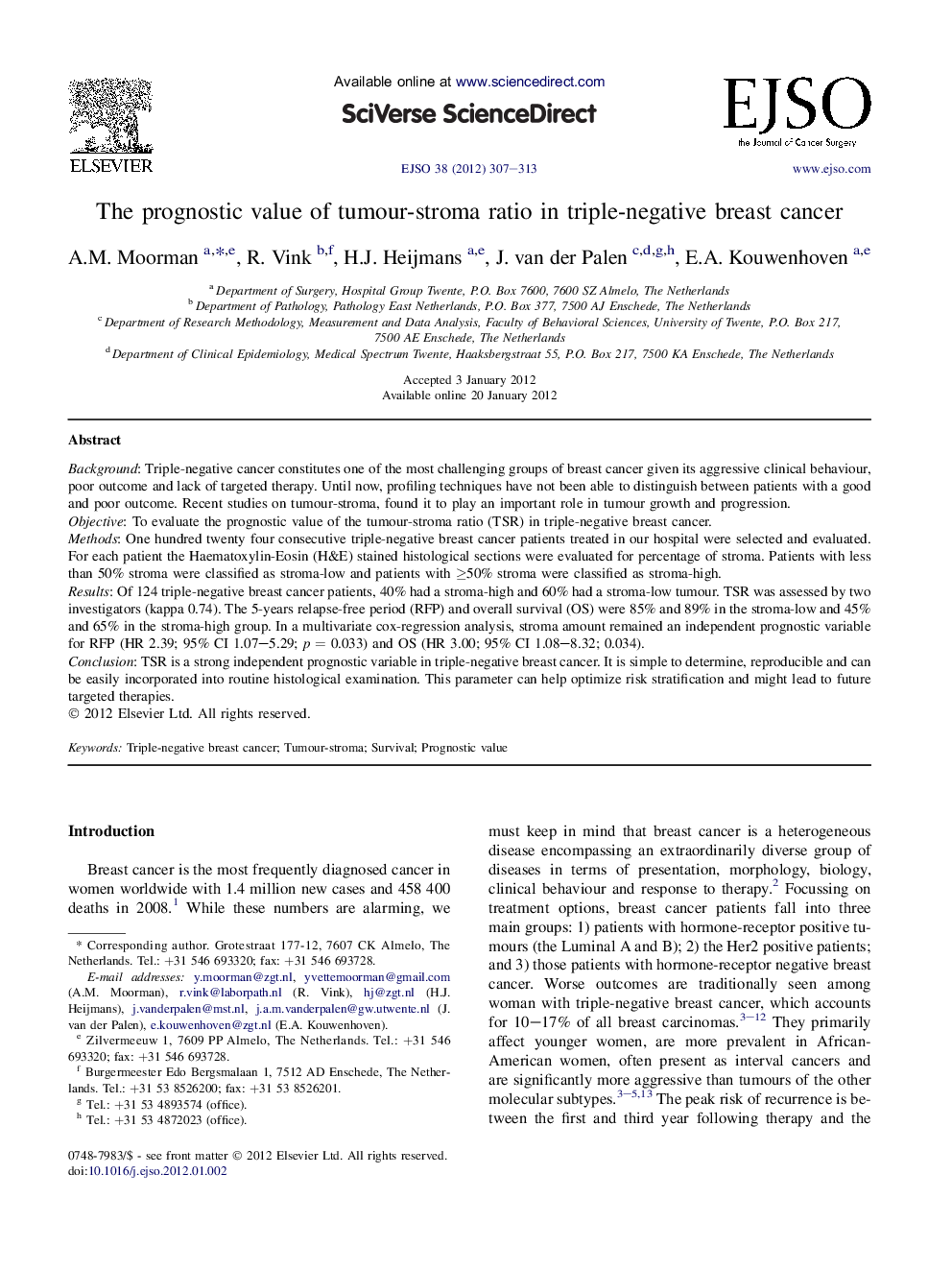| Article ID | Journal | Published Year | Pages | File Type |
|---|---|---|---|---|
| 3986618 | European Journal of Surgical Oncology (EJSO) | 2012 | 7 Pages |
BackgroundTriple-negative cancer constitutes one of the most challenging groups of breast cancer given its aggressive clinical behaviour, poor outcome and lack of targeted therapy. Until now, profiling techniques have not been able to distinguish between patients with a good and poor outcome. Recent studies on tumour-stroma, found it to play an important role in tumour growth and progression.ObjectiveTo evaluate the prognostic value of the tumour-stroma ratio (TSR) in triple-negative breast cancer.MethodsOne hundred twenty four consecutive triple-negative breast cancer patients treated in our hospital were selected and evaluated. For each patient the Haematoxylin-Eosin (H&E) stained histological sections were evaluated for percentage of stroma. Patients with less than 50% stroma were classified as stroma-low and patients with ≥50% stroma were classified as stroma-high.ResultsOf 124 triple-negative breast cancer patients, 40% had a stroma-high and 60% had a stroma-low tumour. TSR was assessed by two investigators (kappa 0.74). The 5-years relapse-free period (RFP) and overall survival (OS) were 85% and 89% in the stroma-low and 45% and 65% in the stroma-high group. In a multivariate cox-regression analysis, stroma amount remained an independent prognostic variable for RFP (HR 2.39; 95% CI 1.07–5.29; p = 0.033) and OS (HR 3.00; 95% CI 1.08–8.32; 0.034).ConclusionTSR is a strong independent prognostic variable in triple-negative breast cancer. It is simple to determine, reproducible and can be easily incorporated into routine histological examination. This parameter can help optimize risk stratification and might lead to future targeted therapies.
